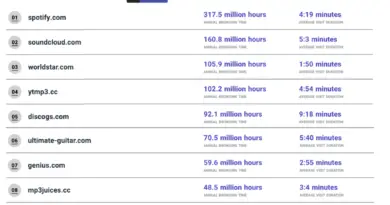
Spotify will soon deliver a Hi-Res Audio option. But is it worth it to you? Take this test.
Readers of these posts will know that I’ve long whined about the decline in people who appreciate proper hi-fi audio when listening to music. For far too many, the tinny, compressed sound of MP3s and similar compressed digital files is “good enough.” For them, convenience trumps audio quality. I get that, but when you’ve heard music in its full frequency splendor, it’s hard to accept anything else. You realize just how much you’ve been missing and the pleasure that comes with hearing it.
This is why I love lossless digital files, music encoded in a way that (at minimum) preserves CD-quality sound. And if you step up the sample rate on the music from 44.1 to, say, 96, the difference is astonishing.
Tidal and Deezer have been streaming in FLAC (probably the most popular lossless format) for a while. Spotify, however, poo-pooed such antics, saying that their 320 kbps stream (or 256 kbps through the web) was perfectly fine.
But this week, Spotify reversed course and announced a “HiFi” upgrade with pure lossless audio. The service will begin sometime later this year. Yes, it will cost more, too. It is, after all, being angled as a premium service for Spotify Premium. So a double premium, then.
Awesome. But is this worth it to you? Can you tell the difference with a FLAC file to make it worth the difference? There is a way to find out.
First, remember that your results will depend on your headphones/earbuds/speakers. If they’re cheap and crappy, you’re obviously okay with the sound you’re getting otherwise you would have upgraded long ago. Second, your ears may not be up to the task.
Take the Digital Feed ABX test, which was designed to determine if regular people could tell the difference between Tidal’s compressed stream and its lossless one. You can complete a number of listening trials. The more you complete, the better your stats. Give it a shot.
(Via TNW)



Pingback: An open letter to everyone and anyone who sends me their music | Alan Cross